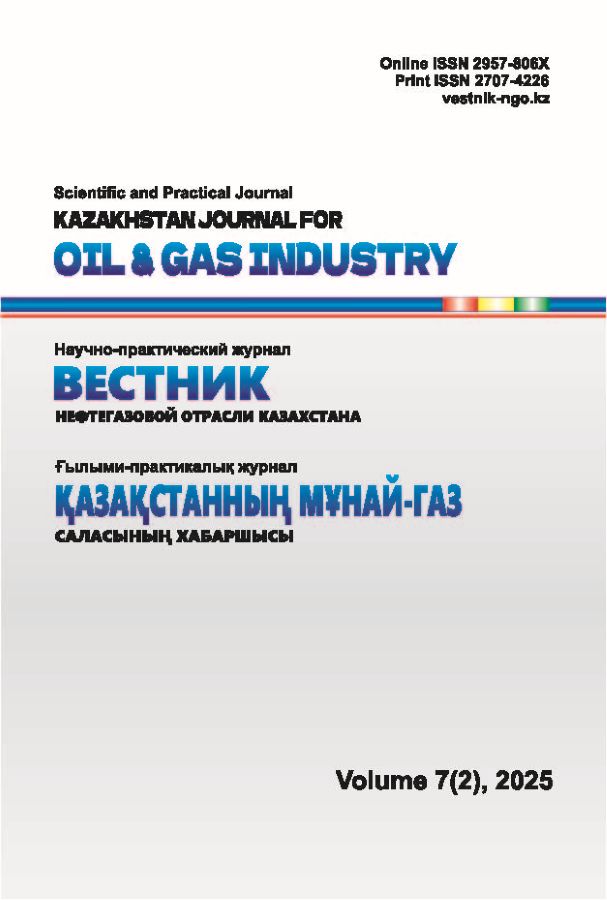A computer vision dataset for personal protective equipment and tool segmentation in oil well workovers
- 作者: Alimova A.N.1, Abdimanap G.S.1,2, Bostanbekov K.A.1, Kurmetbek B.1, Boltaykhanova T.T.1, Nurseitov D.B.1,2
-
隶属关系:
- KMG Engineering
- Satbayev University
- 期: 卷 7, 编号 2 (2025)
- 页面: 73-83
- 栏目: Digital technologies
- URL: https://bakhtiniada.ru/2707-4226/article/view/310170
- DOI: https://doi.org/10.54859/kjogi108784
- ID: 310170
如何引用文章
全文:
详细
Background: Employees working in hazardous industrial environments are required to wear personal protective equipment (PPE) and follow established safety procedures. Preventing incidents, minimizing risks to workers, and improving overall safety require continuous monitoring through computer vision techniques and automated alerts for hazardous conditions. These technologies help ensure compliance with safety standards and reduce the influence of human error. However, these systems are only as effective as the data they rely on. This underscores the importance of developing dedicated, high-quality annotated datasets. This work introduces a new dataset for segmenting PPE and tools in hazardous oilfield operations, including underground and major well workovers. The dataset was created based on real-world production environments.
Aim: Creating and training a dataset to segment PPE and tools using computer vision methods, enabling the automatic detection of hazardous conditions and contributing to improved safety at industrial sites.
Materials and methods: The dataset was constructed using video footage collected from a well workover crew at the Zhetybai oilfield. Annotation was carried out in CVAT, while segmentation was accelerated using the Segment Anything Model. The annotated data was then used to train a neural network based on the YOLOv8 architecture.
Results: The resulting dataset consists of 16 classes. It includes personal protective equipment (helmet, glasses, jacket, gloves, trousers, and boots) as well as their absence, represented by negative classes. It also covers key production elements such as casing pipes, a hydraulic wrench, an elevator, and personnel. The dataset is used to train computer vision models. Models trained on this dataset have demonstrated stable performance under real-world industrial conditions.
Conclusion: The dataset and model developed in this work mark a step toward building real-time safety monitoring systems for industrial settings. These systems can detect whether PPE is used properly, flag safety violations, and generate reports. The dataset can be adapted to other environments, extended with new classes, and integrated into larger safety management platforms.
作者简介
A. Alimova
KMG Engineering
编辑信件的主要联系方式.
Email: a.alimova@kmge.kz
ORCID iD: 0000-0002-5155-2417
PhD
哈萨克斯坦, AstanaG. Abdimanap
KMG Engineering; Satbayev University
Email: g.abdimanap@kmge.kz
ORCID iD: 0000-0003-1676-4075
哈萨克斯坦, Astana; Almaty
K. Bostanbekov
KMG Engineering
Email: k.bostanbekov@kmge.kz
ORCID iD: 0000-0003-2869-772X
PhD
哈萨克斯坦, AstanaB. Kurmetbek
KMG Engineering
Email: b.kurmetbek@kmge.kz
ORCID iD: 0009-0001-7510-2445
哈萨克斯坦, Astana
T. Boltaykhanova
KMG Engineering
Email: tomiris.boltaikhanova@gmail.com
ORCID iD: 0009-0009-9965-7419
哈萨克斯坦, Astana
D. Nurseitov
KMG Engineering; Satbayev University
Email: d.nurseitov@kmge.kz
ORCID iD: 0000-0003-1073-4254
Cand. Sc. (Physics and Mathematics), associate Professor
哈萨克斯坦, Astana; Almaty参考
- Kelm A, Laußat L, Meins-Becker A, et al. Mobile passive Radio Frequency Identification (RFID) portal for automated and rapid control of Personal Protective Equipment (PPE) on construction sites. Automation in Construction. 2013;36:38–52. doi: 10.1016/j.autcon.2013.08.009.
- Zhang H, Yan X, Li H, et al. Real-time alarming, monitoring, and locating for non-hard-hat use in construction. Journal of Construction Engineering and Management. 2019;145:1–13. doi: 10.1061/(asce)co.1943-7862.0001629.
- Wang Z, Wu Y, Yang L, et al. Fast personal protective equipment detection for real construction sites using deep learning approaches. Sensors. 2021;21(10):3478. doi: 10.3390/s21103478.
- Wu J, Cai N, Chen W, et al. Automatic detection of hardhats worn by construction personnel: A deep learning approach and benchmark dataset. Automation in Construction. 2019;106:102894. doi: 10.1016/j.autcon.2019.102894.
- Vukicevic AM, Djapan M, Isailovic V, et al. Generic compliance of industrial PPE by using deep learning techniques. Safety Science. 2022;148:105646. doi: 10.1016/j.ssci.2021.105646.
- zenodo.org [Internet]. Openсv/Cvat: v1.1.0. 2020. Zenodo [cited 2024 May 26]. Available from: https://doi.org/10.5281/zenodo.4009388.
- github.com [Internet]. Ultralytics [cited 2024 May 26]. Available from: https://github.com/ultralytics/ultralytics.
- Redmon J, Divvala S, Girshick R, Farhadi A. You only look once: unified, real-time object detection. IEEE Conference on computer vision and pattern recognition; 2016 June 27–30; Las Vegas, NV, USA. Available from: https://ieeexplore.ieee.org/document/7780460.
- Bai M, Urtasun R. Deep watershed transform for instance segmentation. IEEE Conference on computer vision and pattern recognition; 2017 July 21–26; Honolulu, HI, USA. Available from: https://ieeexplore.ieee.org/document/8099788.
- Gao N, Shan Y, Yupei W, et al. SSAP: Single-shot instance segmentation with affinity pyramid. IEEE/CVF International Conference on Computer Vision; 2019 Oct 27 – Nov 2; Seoul, Korea (South). Available from: https://ieeexplore.ieee.org/document/9010302.
- Dai J, He K, Sun J. Instance-aware semantic segmentation via multi-task network cascades. IEEE Conference on computer vision and pattern recognition; 2016 June 27–30; Las Vegas, NV, USA. Available from: https://ieeexplore.ieee.org/document/7780712.
- He K, Gkioxari G, Dollar P, Girshick R. Mask R-CNN. IEEE International Conference on computer vision; 2017 Oct 22–29; Venice, Italy. Available from: https://ieeexplore.ieee.org/document/8237584.















